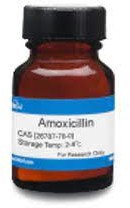Which of the following patients is most likely experiencing Hyperglycemic Hyperosmolar Nonketotic Syndrome based on their symptoms?
A 6 year old that is presenting with polyuria, polydipsia, abdominal pain, and vomiting
A 66 year old with type I diabetes that has ketones present in their urine.
A 72 year old with a health history of diabetes who has a blood glucose of 300 mg/dL and is complaining of thirst and frequent urination.
A 69 year old admitted with an infection of the right foot with a health history of diabetes that reports missing several doses of Metformin and has a blood glucose of 600 mg/dL.
The Correct Answer is D
Choice A rationale: This may indicate a different condition such as gastroenteritis rather than Hyperglycemic Hyperosmolar Nonketotic Syndrome (HHNS).
Choice B rationale: This is more indicative of diabetic ketoacidosis (DKA) rather than HHNS.
Choice C rationale: A 72-year-old with a history of diabetes, elevated blood glucose, and complaints of thirst and frequent urination might have uncontrolled diabetes, but the absence of severe hyperglycemia and other symptoms specific to HHNS makes this choice less likely.
Choice D rationale: This fits the criteria for HHNS. The infection, missed medication, and extremely high blood glucose levels suggest the possibility of Hyperglycemic Hyperosmolar Nonketotic Syndrome.
Nursing Test Bank
Naxlex Comprehensive Predictor Exams
Related Questions
Correct Answer is A
Explanation
Choice A rationale: This is the correct answer. It corresponds to 300 mg of the drug ((300x 5)/250).
Choice B rationale: This is incorrect because it is too low. It is the amount of milliliters that corresponds to 200 mg of amoxicillin trihydrate, which is less than the prescribed dose of 300 mg.
Choice C rationale: This is incorrect because it is too low. It is the amount of milliliters that corresponds to 60 mg of amoxicillin trihydrate, which is not enough to treat an oral infection.
Choice D rationale: This is incorrect because it is too low. It is the amount of milliliters that corresponds to 250 mg of amoxicillin trihydrate, which is less than the prescribed dose of 300 mg.
 |
Correct Answer is D
Explanation
Choice A rationale: This refers to postrenal AKI, which is caused by an obstruction in the urinary tract that prevents urine from leaving the body.
Choice B rationale: This refers to AKI in general and is not specific compared to choice D.
Choice C rationale: This refers to intrinsic AKI, which is caused by damage to the kidney tissue or cells from various causes, such as inflammation, infection, toxins, or ischemia.
Choice D rationale: This is correct because it is pre-renal AKI, a condition in which kidney blood flow may become significantly reduced, including cases where a significant amount of fluid has been lost. This situation suggests potential hypovolemia (low blood volume) due to the massive GI bleed, which can lead to reduced kidney blood flow and subsequent acute kidney injury.
Whether you are a student looking to ace your exams or a practicing nurse seeking to enhance your expertise , our nursing education contents will empower you with the confidence and competence to make a difference in the lives of patients and become a respected leader in the healthcare field.
Visit Naxlex, invest in your future and unlock endless possibilities with our unparalleled nursing education contents today
Report Wrong Answer on the Current Question
Do you disagree with the answer? If yes, what is your expected answer? Explain.
Kindly be descriptive with the issue you are facing.
